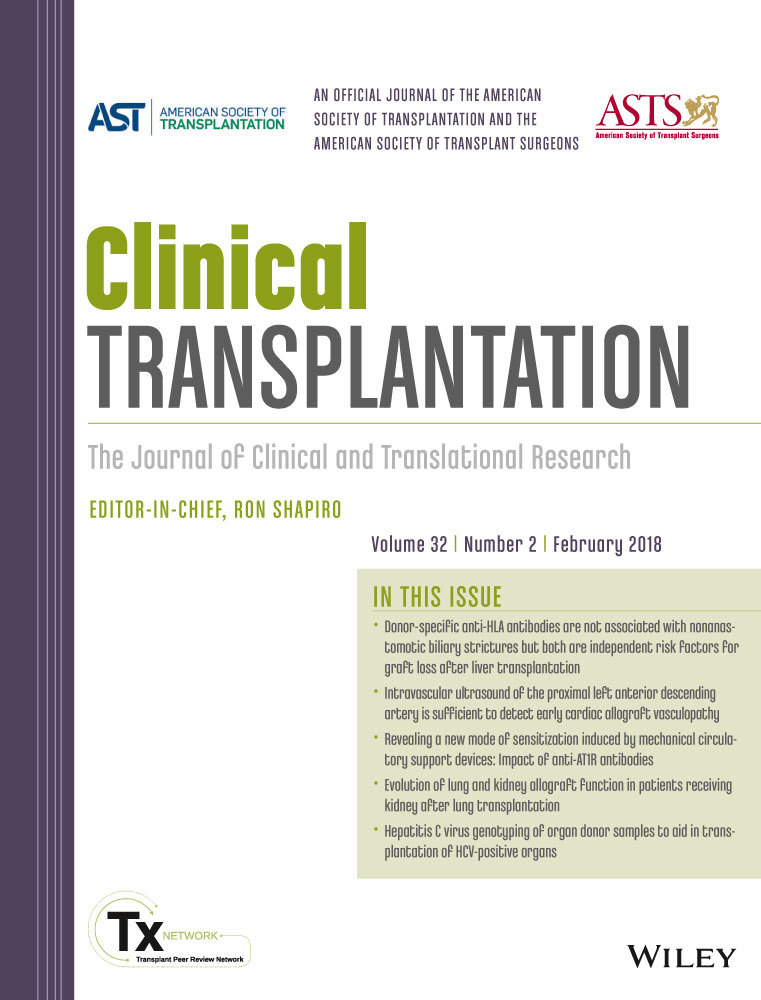Evolution of lung and kidney allograft function in patients receiving kidney after lung transplantation
Abstract
Calcineurin inhibitor (CNI) toxicity leads to end-stage renal disease in almost half of long-term survivors after lung transplantation, some of them receiving kidney transplants. Little is known about the outcomes of kidney and lung allograft function following kidney after lung transplantation (KALTPL) in the modern era. We retrospectively analyzed a group of 13 consecutive patients who received a KALTPL with respect to their renal and pulmonary function and immunological evolution over 2 years. We documented a stable evolution of forced expiratory volume in 1 second (FEV1) after KALTPL in most patients as well as an excellent kidney graft during the 2-year follow-up period. In our small cohort, living donations showed a significantly higher estimated glomerular filtration rate compared to deceased donation (75.7 compared to 41.6 mL/min). Patients who received a preemptive KALTPL were more likely to improve their lung function after KALTPL. Four patients developed de novo donor-specific antibodies (DSA) against the kidney graft. There were no DSA against shared antigens from the lung allograft. De novo DSA did not lead to graft loss in any patient. All 13 patients survived the first 24 months after KALTPL.




